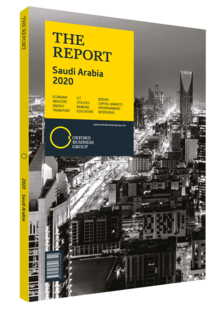Khaled Al Qureshi, CEO, Saudi Water Partnership Company: Interview

Interview: Khaled Al Qureshi
In what ways can the privatisation of state-owned assets increase efficiency in service provision?
KHALED AL QURESHI: The Saudi Water Partnership Company relies exclusively on the private sector to finance, design, construct, operate and maintain new water-related projects, with the aim to meet future water requirements. In late 2019, a strategic reservoir and transmission pipelines were added to the mix, and this is the first time in the world that such pipelines are being structured as a public-private partnership (PPP). Looking forward, we anticipate that the private sector will seize opportunities in the possible privatisation of several dams in the Kingdom for potable water supply, irrigation and possibly energy storage. Expanding the privatisation of government services is one objective, along with performance and productivity improvement.
What moves are being carried out to improve national water security in Saudi Arabia?
AL QURESHI: Many goals of Vision 2030 are related to the water sector. For instance, a number of the Kingdom’s existing aquifers are at low water levels and need to be replenished. These groundwater sources are being replaced, and 95% of the water supply is expected to be sourced from desalinated water by 2030. Keeping in mind that desalinated water represents about 65% of the total water supply today, this means that a significant number of plants will have to be developed over the next three to five years. We envision that another eight to 10 desalination plants will be procured on a PPP basis. Each project will be structured on a build-own-operate basis over a 25-year concession, making them attractive for private sector participation.
How can new technologies help to optimise the energy consumption of water treatment plants?
AL QURESHI: Driving energy efficiency in water production with prescribed targets for developers and incentives to use less energy are key objectives. We encourage the use of seawater reverse osmosis (SWRO) as opposed to thermal desalination, which has been the dominant technology in the Kingdom for decades. SWRO is significantly more energy efficient than thermal desalination, and we have made great strides in making the process more robust to deal with difficult Middle Eastern seawater. The use of SWRO technology has enabled us to save about 15 KWh and 10 kg of CO per cu metre of water generated.
In sewage treatment, we are insisting that developers build their plants with beneficial sludge to eliminate the need for landfill. We are also ensuring that the treated sewage effluent is reused in irrigation and agriculture applications. Going forward, we see sustainability as a major driving force and are looking to the private sector to help us with innovative solutions.
To what extent will prices continue to decrease for water desalination projects and potentially break the $0.40-per-cu-metre mark?
AL QURESHI: Tariffs are sensitive to interest rates; however, there are good indications that interest rates will remain low for the moment. There also appears to be sufficient liquidity in the market for financing these projects, and there are still many developers and contractors aggressively bidding for water projects.
Electricity still accounts for 30-40% of a plant’s operating costs so there is room for tariffs to come down as energy efficiency improves. SWRO technology is changing fast, and a new generation of low-efficiency membranes and energy recovery devices will support a lower tariff, simultaneously enabling developers to maintain their profit margins. Energy costs will also decrease due to better integration of SWRO technology into the power grid and large photovoltaic projects that are being developed in the Kingdom. Future developments in technology will improve plant designs and help bring down costs further. So the question is not if the $0.40 barrier will be breached, but rather when.
You have reached the limit of premium articles you can view for free.
Choose from the options below to purchase print or digital editions of our Reports. You can also purchase a website subscription giving you unlimited access to all of our Reports online for 12 months.
If you have already purchased this Report or have a website subscription, please login to continue.

